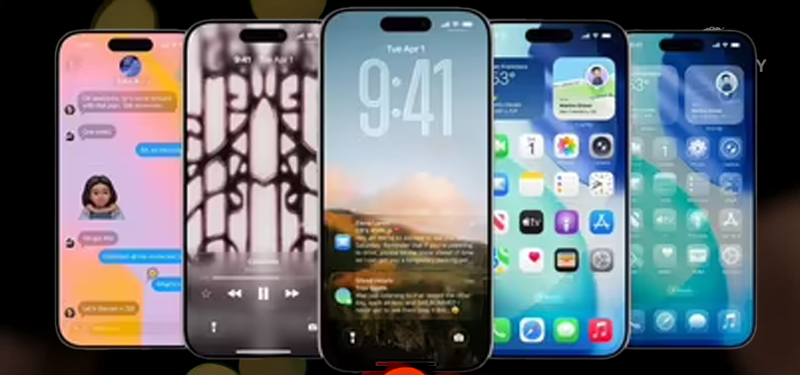Samsung Galaxy S25 Edge Review: A Slim Flagship with Fewer Compromises
Samsung’s Galaxy S25 Edge might be the company’s boldest design swing since the original Note series. At just 5.8mm thick, it's the slimmest high-end device Samsung has produced in years—and yes, it's thinner than the iPhone 16 Pro and lighter than the Galaxy S25 Plus. But this isn’t just a rehash of last year's playbook in a tighter chassis. The S25 Edge trims more than just fat—it cuts a few corners too, though not as many as you might expect.
Below is a clear look at where Samsung hit, missed, and what kind of buyer this phone is truly for.
Key Specs
-
Display: 6.7-inch QHD+ LTPO OLED, 120Hz refresh rate
-
Chipset: Snapdragon 8 Gen 3 "Elite"
-
Storage & RAM: 256GB UFS 4.0, 12GB LPDDR5X
-
Battery: 3,900mAh, 25W wired / 15W wireless / Qi2 supported
-
Camera System:
-
Rear: 200MP main (OIS), 12MP ultra-wide
-
Front: 12MP
-
-
Dimensions: 158.2 x 75.6 x 5.8 mm
-
Weight: 163g
-
Protection: IP68 rated, Gorilla Glass Ceramic 2 (front), Victus 2 (back)
Design: Slim on Paper, Noticeable in the Hand
Samsung trimmed 1.5mm off the S25 Plus’s thickness and nearly shaved an ounce of weight. That doesn’t sound groundbreaking until you pick it up. It’s the kind of phone that feels like it isn't in your pocket—even when it is. In everyday use, the reduction in size matters. It's easier to hold, slips into smaller bags without protest, and doesn't weigh down gym shorts or inner jacket pockets.
But with the compact form comes a tradeoff: durability. In PBKReviews’ drop tests, the Gorilla Glass Ceramic 2 front and Victus 2 rear both cracked when dropped flat—though internal components remained unaffected. It’s not catastrophic, but it’s definitely a "case required" situation.
Performance: Top-Tier with a Thermal Twist
Powered by Qualcomm’s Snapdragon 8 Elite chip, the S25 Edge delivers flagship-level performance. Gaming, multitasking, and camera processing run without hiccups. And surprisingly, the heat management holds up—Samsung fitted the Edge with a vapor chamber large enough to compete with bulkier phones.
That said, it gets warm under heavy loads, especially with extended gaming or hotspot use. But thermal throttling? Practically nonexistent.
Camera: High Resolution, Short on Reach
The decision to drop the telephoto lens is one of the more noticeable sacrifices. You still get a 200MP main sensor—same as in the Ultra—and a 12MP ultra-wide, but that’s it. No zoom lens. The main camera does offer solid 2x digital zoom via sensor cropping, but anyone used to a 3x or 5x lens will feel the downgrade.
That said, image quality is sharp, with Samsung’s usual saturated color profile. It handles dynamic range well, and low-light performance is strong for such a compact build.
Battery: Surprisingly Acceptable
The biggest question mark going into this release was battery life. With a 3,900mAh capacity (1,000mAh less than the S25 Plus), many feared the worst. But in practice, it’s serviceable. Expect a full day of moderate use—email, social apps, music streaming, some photography—ending with around 15-25% remaining.
Heavy users, especially those watching videos or gaming for hours, will want to top up before dinner. Samsung’s 25W charging isn’t the fastest, but it’ll get you from 0 to 50% in about 30 minutes. Wireless charging is included, though speeds cap at 15W.
For users who want to maximize longevity, Samsung now offers easier access to battery replacements—something worth considering if you’re looking to keep your phone beyond three years.
Software & Updates
Running One UI 7.1 on Android 14, the Galaxy S25 Edge brings all the usual Samsung perks—DeX support, Samsung Knox, and tight Google ecosystem integration. Samsung has committed to four major Android updates and five years of security patches, placing the Edge in the same league as Google and Apple for long-term support.
Final Thoughts: Who Should Buy the Galaxy S25 Edge?
If you’re tired of carrying around a brick of a phone but still want flagship performance, the S25 Edge is in a league of its own. Yes, battery life is shorter, and there's no telephoto lens—but those are conscious compromises for a slimmer, lighter experience.
Who it’s for:
-
Power users who want flagship specs without the physical bulk
-
People who carry their phones in tight pockets, small bags, or slim clutches
-
Anyone ready to use wireless earbuds and cloud storage (no microSD slot or headphone jack)
Who should skip it:
-
Heavy gamers or media streamers who demand all-day endurance
-
Photography enthusiasts who rely on optical zoom
-
Users who tend to keep phones longer than 3–4 years without servicing




Laisser un commentaire
Ce site est protégé par hCaptcha, et la Politique de confidentialité et les Conditions de service de hCaptcha s’appliquent.